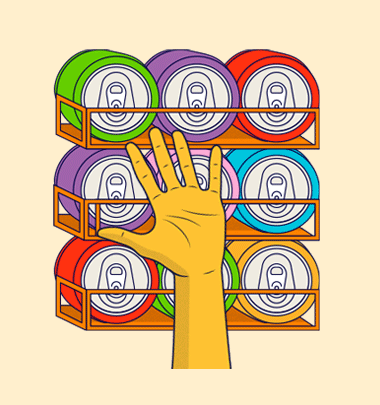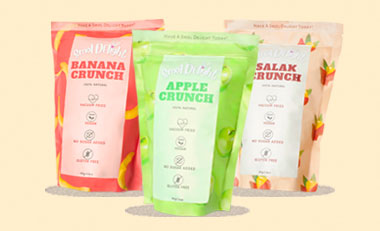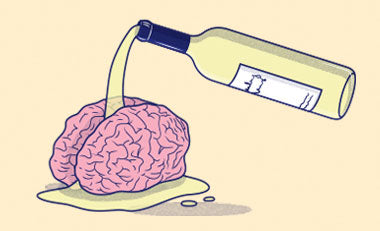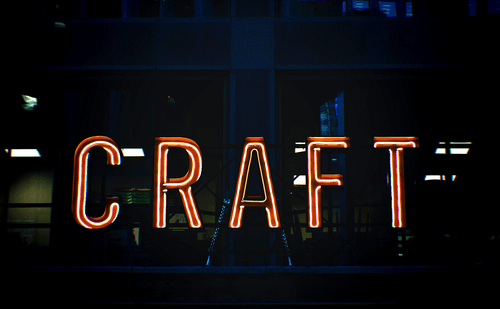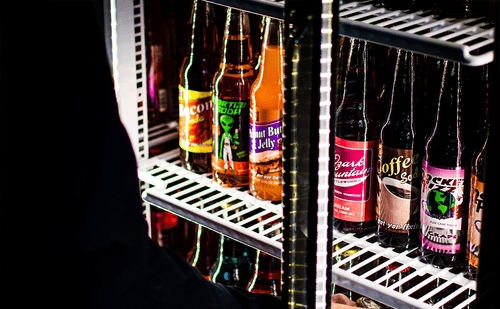Whenever you shop for groceries at the supermarket, the colourful cans of beer that litter the shelves may have caught your eye at some point, but do you know what they are?
 Image credit: @sigmund
Image credit: @sigmund
Well, those vibrant cans that are full of character are… craft beers! So, what are craft beers exactly and how are they different from the commercial beers that we are so used to? Well, the term was coined by Vince Cottone in the mid-1980s, who wanted the word “craft” to emulate the idea of a small brewery that uses traditional methods and ingredients to produce a handcrafted beer that is marketed locally.
As the term caught on, the Brewers Association formally defined the criteria needed for one to be recognised as a craft brewer:
- One must have a federal brewer’s notice - a licence to brew beer;
- One can only sell beer made with less than 10% non-traditional beer ingredients;
- One must not use artificial ingredients;
- One must not be more than 30% owned by a large macro brewery.
 Image credit: Beerfarm
Image credit: Beerfarm
However, “craft beer” today has a much looser definition. According to the Brewers Association, craft breweries must be small; this means that a craft brewery should not produce more than 6 million barrels of beer per year. Secondly, a craft brewery should be independent. Lastly, a craft brewery’s output must primarily be beer; no hard seltzer companies allowed!
Sure, the Brewers Association constantly revises the standards for what is considered “craft”, but many breweries continue to market their mass-produced concoctions as craft beers. In fact, several microbreweries have been bought over by massive brewing companies who seek to increase production (and thus, profit) while still marketing their beers as “craft”.
History of craft beer
The craft beer revolution began with one man, Fritz Maytag, who bought the Anchor Brewing Company in the 1960s. Soon after, thousands of Americans began to brew beer at home. Most of them did it for personal consumption, but some started a business for profit.
 Image credit: Anchor Brewing Co.
Image credit: Anchor Brewing Co.
In 1976, Jack McAuliffe - a former sailor - founded the New Albion Brewery in California with a vision to replicate the amazing beers he tasted around the world. McAuliffe started with a humble homebrewing kit guide from Glasgow, an alternative brewing vessel made from a trash can, and ended up with tasty Scottish beers that impressed many - even Scottish locals!
Craft vs mainstream beers - what's the difference?

Image credit: @waywardbrewing
At first glance, they may look the same, but there are a few differences between craft and mainstream beers. Mass-produced beers are typically watery, yellow, and pale. Conversely, craft beer comes in a wide variety of colours, as its colour depends on its brew type. The foam of mainstream beer also tends to dissipate quickly, as compared to its craft counterpart.

Image credit: Elevate
Most mass-produced beers have a monotone flavour, so they have to be served chilled. Meanwhile, at the heart of every craft beer lies a unique flavour that varies with every batch. The temperature to serve each craft beer would thus differ, as different flavours emerge best at different temperatures!
Craft beer prides itself on using high-quality ingredients and traditional brewing methods to produce the best-tasting beer possible. Many big breweries do not follow the same ethos, and will often use rice or corn instead of hops to cut costs. As such, big breweries often compromise taste for profit.
Why do people love craft beer?
Craft beer is like the cool funky aunt of beers - you know, the only relative you adore because they always bring you gifts and actually have a sense of style. You can easily spot craft beer by the colourful and bold designs of the individual cans, and especially after you take a sip, or rather, down a can (or a few).

Many beer lovers choose craft beer as their preferred beer-verage simply because it tastes better. As it is produced in smaller batches, the quality of the beer is assured. More importantly, craft beer is basically Frankenstein’s monster, where a bunch of crazy beer scientists attempt to create unique flavours that you’d never expect a normal beer to possess.

Image credit: Cartoon Network
Sugar (grains), spice (hops), and everything nice (yeast and water) - these were the ingredients chosen to create the perfect little can of beer. But many of these breweries intentionally “spill” an extra ingredient to create a delicious and complex flavour profile they could call their own. Chemical X can range from whale testicles to toasted marshmallows.
We know, there are some really weird flavours of craft beer out there.
But don’t worry, craft beer isn’t just about the weird and honestly, terrifying flavours - there are plenty of delectable choices available for the faint of heart. You can start by figuring out what your favourite style of craft beer is. Is it ales, lagers, stouts, or sours?
How to properly savour craft beer
In order to get the best experience out of drinking craft beer, there are three things you should look out for. Doing this will not only help you notice the different flavours that make up your delicious beverage, but will also enrich the whole tasting experience.

Before taking a sip, take a whiff of the beer. You will be able to smell the hops - one of the main ingredients of beer - which are added to balance the sweetness of the grains. Hops provide a certain bitterness to a beer, and different types of hops can create floral or citrus scents. Pick up on what these scents are as you breathe it in.
After taking a sip, take note of the malt flavours in the beer. These flavours are created by cooking the grains so that the starches in the grains turn into sugars. Does your beer taste earthy, roasted, or caramelised?

Lastly, pay attention to the aftertaste of the beer. Carbonation in beer not only makes for a terrific palate cleanser, but also leaves a characteristic aftertaste that varies from beer to beer. How does the aftertaste differ from the flavours that arose when you drank the beer?
What is craft beer and where can I get it?

Image credit: Thirsty
Now that you better understand the art of craft beer and what it entails, the only thing left to do is to try it for yourself. Is it as tasty as everybody says it is? Does it live up to the hype? That’s for you to determine.

Image credit: Adam Wilson
With an abundance of craft beer bars in Singapore, you could easily visit one to try it for yourself while seeking refuge from the hot and humid weather. Who knows, perhaps you will become an avid fan of craft beer, or even find like-minded individuals there to share the experience with.
However, if going out isn’t really your thing, we totally get it. The beauty of delivery is that you can get your well-deserved craft beer without leaving your house by just ordering it online.

